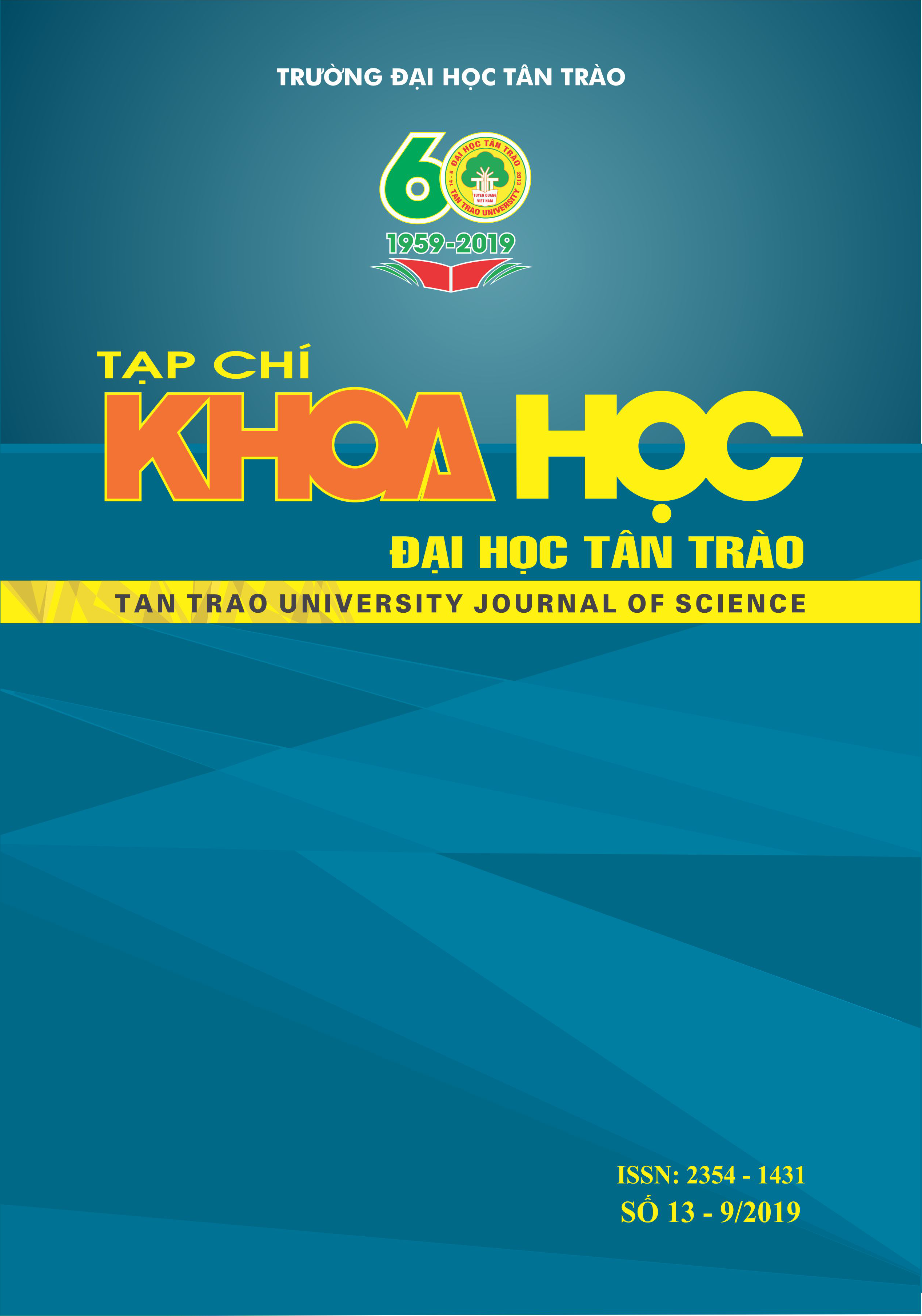Nghiên cứu cảm ứng ra hoa trong ống nghiệm ở cây hoa hồng James Golway
DOI:
https://doi.org/10.51453/2354-1431/2019/270Từ khóa:
Hoa hồng, ra hoa trong ống nghiệm, bạc nitrate, hoa hồng James Golway.Tóm tắt
Hoa hồng là một trong những loài hoa được yêu thích nhất trên thế giới. Hoa hồng thường được sử dụng để trang trí, làm thuốc và nước hoa. Nghiên cứu này xác định được môi trường cảm ứng ra hoa trong ống nghiệm ở cây hoa hồng James Golway. Môi trường thích hợp nhất cho tạo kéo dài chồi là môi trường MS cơ bản, agar 9,0 g/l, sucrose 30 g/l và GA3 0,7 mg/l. Môi trường thích hợp nhất cho khả năng tạo rễ của cây hoa hồng là môi trường MS cơ bản, agar 9,0 g/l, sucrose 30 g/l và IBA 1,5 mg/l. Hoa hồng được cảm ứng ra hoa in vitro khi bổ sung AgNO3 10mg/l trong 4 tuần.
Tải xuống
Tài liệu tham khảo
1. Kantamaht K., Nonlapan P., Kamnoon K., 2009. In vitro flowering from cultured nodal explants of rose (R. hybrida L.). Not. Bot. Hort. Agrobot. Cluj, 37(2): 261 - 263.
2. Naphaporn N. U., Kantamaht K. and Kamnoon K., 2009. Micropropagation from cultured nodal explants of rose (Rosa hybrida L. cv. „Perfume Delight‟). Songklanakarin Journal of Science and Technology, 31(6): 583-586.
3. Pratheesh P.T. và Kumar Anil M., (2011), In vitro flowering in Rosa Indica L. IJPBS, Volume 2 (1): 196-200.
4. Nguyễn Thị Kim Thanh, 2005. Nhân giống cây hoa hồng bằng kỹ thuật nuôi cấy invitro. Tạp chí Nông nghiệp và Phát triển nông thôn, 1: 39-41.
5. Nguyễn Thị Phương Thảo, Đặng Quang Bích, Nguyễn Thị Thuỷ, Nguyễn Thị Thuỳ Linh, Phạm Thị Thu Hằng, Đặng Thị Thanh Tâm, Ninh Thị Thảo, Nguyễn Thị Lâm Hải, Nguyễn Thanh Hải, 2015. Nhân nhanh và cảm ứng ra hoa cây hoa hồng cơm (Rosa sericea LINDL). J. Sci. & Devel. 13(4): 606-613.
6. Shabbir A., Hameed N., AlI A. and Bajwa R., 2009. Effect of different cultural conditions on micropropagation of rose (Rose indica L.). Pak. J. Bot., 41(6): 2877-2882.
Tải xuống
Đã Xuất bản
Cách trích dẫn
Số
Chuyên mục
Giấy phép

Tác phẩm này được cấp phép theo Giấy phép Quốc tế Creative Commons Attribution-ShareAlike 4.0 .
Bài báo được xuất bản ở Tạp chí Khoa học Đại học Tân Trào được cấp phép theo giấy phép Ghi công - Chia sẻ tương tự 4.0 Quốc tế (CC BY-SA). Theo đó, các tác giả khác có thể sao chép, chuyển đổi hay phân phối lại các bài báo này với mục đích hợp pháp trên mọi phương tiện, với điều kiện họ trích dẫn tác giả, Tạp chí Khoa học Đại học Tân Trào và đường link đến bản quyền; nêu rõ các thay đổi đã thực hiện và các nghiên cứu đăng lại được tiến hành theo cùng một bản quyền.
Bản quyền bài báo thuộc về các tác giả, không hạn chế số lượng. Tạp chí Khoa học Tân Trào được cấp giấy phép không độc quyền để xuất bản bài báo với tư cách nhà xuất bản nguồn, kèm theo quyền thương mại để in các bài báo cung cấp cho các thư viện và cá nhân.
Mặc dù các điều khoản của giấy phép CC BY-SA không dành cho các tác giả (với tư cách là người giữ bản quyền của bài báo, họ không bị hạn chế về quyền hạn), khi gửi bài tới Tạp chí Khoa học Đại học Tân Trào, tác giả cần đáp ứng quyền của độc giả, và cần cấp quyền cho bên thứ 3 sử dụng bài báo của họ trong phạm vi của giấy phép.






